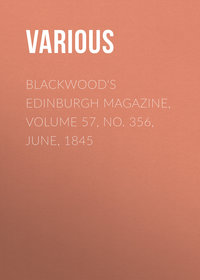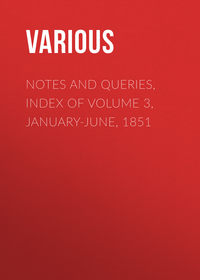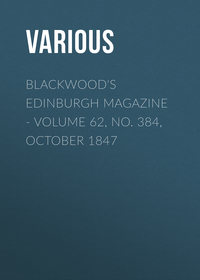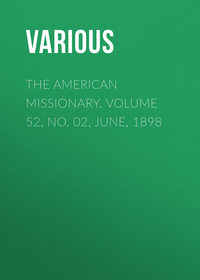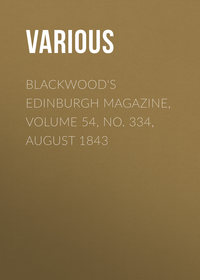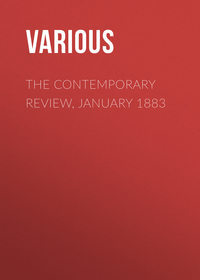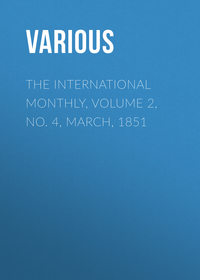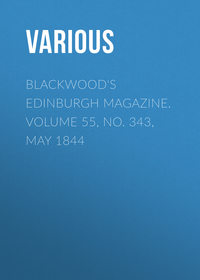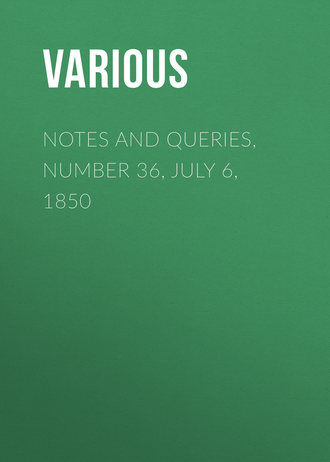 полная версия
полная версияNotes and Queries, Number 36, July 6, 1850
"Alexander Magnus ....successores ejus..... in nummis omnes cornuti quasi Jovii, honore utique manifesto, donee cornuum decus in ludibria uxoriorum vertit somnorum interpres Artimidorus."
On which he observes,—
"Benè. Nam ante Artimidorium nullus, quod sciam, hujus scommatis mentionem fecit. Quod enim Traug. Fred. Benedict. ad Ciceron. Epist. ad Div. 7.24. ad voc. 'Cipius' conjecit, id paullo audientus mihi videtur conjecisse."
I have not succeeded in obtaining a sight of this edition of the Epistles. And I should feel much obliged to any one who would quote the "conjecture," and so enable your readers to gauge its "audacity" for themselves. Is it not odd that Reiff should have made no remark on the utter want of connection between the "honor manifestus," and the "ludibria" of Olaus? or on the [Greek: kata to legomenon] of the author that he was illustrating? Artemidorus may certainly have been the first who recorded the scomma; but the words [Greek: kata to legomenon] would almost justify us supposing that
"—The hornWas a crest ere he was born."Menage (referred to above) evidently lays some stress on the following epigram, as an illustration of the question:—
[Greek: "Ostis eso purous katalambanei ouk agorazon,Keinou Amaltheias hae gunae esti keras."]Parmenon. Anthol. lib. ii.
But I confess that I am utterly unable to see its point and therefore cannot, of course, trace its connection with the subject. Falstaff, it is true, speaks of the "horn of abundance," but then he assigns it to the husband, and makes the "lightness of the wife shine through it." (K. Henry IV. Act i. Sc. 2., on which see Warburton's note.)
C. FORBES.Temple, April 25.
L.C. may find the following references of service to him in his inquiry into the origin of this expression:—"Solanus ad Luc. D.M. 1. 2.; Jacobs ad Lucill. Epigr. 9.; Belin. ad Lucian, t. iii. p. 326.; Huschk. Anal. p. 168.; Lambec. ad Codin. § 126.; Nodell in Diario Class. t. x. p. 157.; Bayl. Dict. in Junone, not. E." Boissonade's note in his Anecdotae, vol. iii. p. 140.
J.E.B. MAYOR.Marlborough College.
Replies to Minor Queries
Shipster (Vol. ii., p. 30.).—If C. B. will consult Dr. Latham's English Language, 2nd ed., he will find that the termination ster is not merely a notion of Tyrwhitt's, but a fact. Sempstress has a double feminine termination. Spinster is the only word in the present English which retains the old feminine meaning of the termination ster.
E.S. JACKSON.Three Dukes (Vol. ii., p. 9.).—I should like a more satisfactory answer to this Query than that I given by C. (Vol. ii., p. 46.). I can give the I names of two of the Dukes (viz. Monmouth and Albermarle); but who was the third, and where can a detailed account of the transaction be found? In Wades' British History chronologically arranged, 3rd edit. p. 230, is the following paragraph under the date of Feb. 28, 1671 (that is, 1670-1):—
"The Duke of Monmouth, who had contrived the outrage on Coventry, in a drunken frolic with the young Duke of Albemarle and others, deliberately kills a ward-beadle. Charles, to save his son, pardoned all the murderers."
The date given in the State Poems is Sunday morning, Feb. 26th, 1670-71. Mr. Lister, in his Life of Edward, Earl of Clarendon (vol. ii. p. 492.), alludes to the affair:—
"The King's illegitimate son Monmouth, in company with the young Duke of Albemarle and others, kills a watchman, who begs for mercy, and the King pardons all the murderers."
C.H. CooperCambridge, June 24, 1850.
Bishops and their Precedence (Vol. ii., p. 9.).—I believe bishops have their precedence because they are both temporal and spiritual barons. Some I years ago, I took the following note from the Gentleman's Mag. for a year between 1790 and 1800; I cannot say positively what year (for I was very young at the time, and unfortunately omitted to "note" it):—
"Every Bishop has a temporal barony annexed to his see. The Bishop of Durham is Earl of Sudbury and Baron Evenwood; and the Bishop of Norwich is Baron of Northwalsham."
Query, where may the accounts of the respective baronies of the bishoprics be found?
HENRY KERSLEY.Why Moses represented with Horns.—Your correspondent H.W. (Vol. i, p. 420.) refers the origin of what he calls the strange practice of making Moses appear horned to a mistranslation in the Vulgate. I send you an extract from Coleridge which suggests something more profound the such an accidental cause; and explains the statement of Rosenmüller (p. 419.), that the Jews attributed horns to Moses "figuratively for power:"—
"When I was at Rome, among many other visits to the tomb of Julius II, I went thither once with a Prussian artist, a man of great genius and vivacity of feeling. As we were gazing on Michael Angelo's Moses, our conversation turned on the horns and beard of that stupendous statue of the necessity of each to support the other; of the superhuman effect of the former, and the necessity if the existence of both to give a harmony and integrity both to the image and the feeling excited by it. Conceive them removed, and the statue would become unnatural without being supernatural. We called to mind the horns of the rising sun, and I repeated the noble passage from Taylor's Holy Dying. That horns were the emblem of power and sovereignty among the Eastern nations; and are still retained as such in Abyssinia; the Achelous of the ancient Greeks; and the probable ideas and feelings that originally suggested the mixture of the human and the brute form in the figure, by which they realised the idea of their mysterious Pan, as representing intelligence blended with a darker power, deeper, mightier, and more universal than the conscious intellect of man; than intelligence—all these thoughts passed in procession before our minds."—Coleridge's Biographia Literaria, vol. ii. p. 127. edit. 1817.
[The noble passage from Taylor's Holy Dying, which Coleridge recreated, is subjoined.]
"As when the sun approaches towards the gates of the morning, he first opens a little eye of heaven, and sends away the spirits of darkness, and gives light to a cock, and calls up the lark to matins, and by and bye gilds the fringes of a cloud, and peeps over the eastern hills, thrusting out his golden horns like those which decked the brows of Moses, when he was forced to wear a veil, because himself had seen the face of God; and still, while a man tells the story, the sun gets up higher, till he shows a fair face and a full light, and then he shines one whole day, under a cloud often, and sometimes weeping great and little showers, and sets quickly; so is a man's reason and his life."
—Jeremy Taylor's Holy Dying.
C.K.Leicester and the reputed Poisoners of his Time (Vol. ii., p. 9.).—"The lady who had lost her hair and her nails," an account of whom is requested by your correspondent H.C., was Lady Douglas, daughter of William Lord Howard of Effingham, and widow of John Lord Sheffield. Leicester was married to her after the death of his first wife Anne, daughter and heir of Sir John Robsart, and had by her a son, the celebrated Sir Robert Dudley, whose legitimacy, owing to his father's disowning the marriage with Lady Sheffield, in order to wed Lady Essex, was afterwards the subject of so much contention. On the publication of this latter marriage, Lady Douglas, in order, it is said, to secure herself from any future practices, had, from a dread of being made away with by Leicester, united herself to Sir Edward Stafford, then ambassador in France. Full particulars of this double marriage will be found in Dugdale's Antiquities of Warwickshire.
The extract from D'Israeli's Amenities of Literature relates to charges against Leicester, which will be found at large in Leicester's Commonwealth, written by Parsons the Jesuit,—a work, however, which must be received with great caution, from the author's well-known enmity to the Earl of Leicester, and his hatred to the Puritans, who were protected by that nobleman's powerful influence.
W.J.Havre.
New Edition of Milton (Vol. ii., p. 21.).—The Rev. J. Mitford, as I have understood, is employed upon a new edition of Milton's works, both prose and verse, to be published by Mr. Pickering. I may mention, by the way, that the sentence from Strada, "Cupido gloriae, quae etiam sapientibus novissima exuitur," which is quoted by Mr. Mitford on Lycidas, Aldine edition, v. 71. ("Fame, that last infirmity of noble minds"), is borrowed from Tacitus Hist. iv. 6. Compare Athenæus, xi. 15. § 116. p. 507. d., where Plato is represented as saying:—
"[Greek: Eschaton ton taes doxaes chitona en to thanato auto apoduometha.]"
Will you allow me to add, that the quotation from Seneca in Vol. i., p. 427. Of "NOTES AND QUERIES" is from the Nat. Quaest. Proef.
J.E.B. MAYOR.Marlborough College, June 8.
Christian Captives (Vol. i., p. 441.).—There is an unfortunate hiatus in the accounts of this parish from 1642 to 1679, which prevents my stating positively the amount of the collection here made; but in 1670, Jan 1., there occurs the following:—
"Item. To Mr. Day for Copying ouer the fower parts that was gathered in the parish for the Reliefe of Slaues in Algiears – - – - 0 2 0"
Mr. Day was curate of Ecclesfield at that time; and in another part of the book there is, in his handwriting, a subscription list, which, though only headed "Colected by hous Row for the …" is more than probably the copy referred to. From it the totals collected appear to have been,—
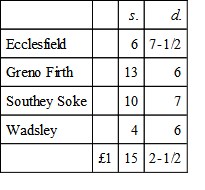
The above are the four byerlaws, or divisions of the parish, and the four churchwardens used separately to collect in their respective byerlaws; and then a fair copy of the whole was made out by the curate or schoolmaster. An ordinary collection in church, upon a brief, averaged 7s. 6d. at this period.
J. EASTWOOD.Ecclesfield.
Borrowed Thoughts (Vol. i., p. 482.).—The number of "NOTES AND QUERIES" here alluded to has unluckily not reached me; but in Vol. ii., p. 30., I observe that your correspondent C., in correcting one error, has inadvertently committed another. Monsieur de la Palisse is the hero alluded to in the popular song which was written at the commencement of the eighteenth century by Bernard de la Monnoye, upon the old ballad, composed after the battle of Pavia, and commencing,—
"Hélas! La Palice est mort,Il est mort devant Pavie;Hélas! s'il n'estait pas mort,Il serait encore en vie!"W.J.Havre.
North Sides of Churchyards (Vol. ii., p. 55.).—A portion of many churchyards is said to have been left unconsecrated, though not to be used as playground for the youth of the parish, but for the burial of excommunicated persons. This was not, however, always on the north side of the church, as is evident from the following extract from the Register of Hart, Durham:—
"Dec. 17. 1596, Ellen Thompson, Fornicatrix (and then excommunicated), was buried of Þe people in Þe chaer at the entrance unto Þe Þeate or stile of Þe churchyard, on the east thereof."
Nor is the north side of the church always the less favourite part for burial. I could name many instances where this is the only part used.
The churchyard now within two hundred yards of me contains about an acre of ground; the larger portion of which lies to the south of the church, but has been very little used for sepulture till of late years, though the churchyard is very ancient. Even now the poor have an objection to bury their friends there. I believe the prejudice is always in favour of the part next the town or village; that on the other side of the church being generally called "the backside."
I find various notices of excommunicated persons being very strangely buried, and in extraordinary places, but I have not as yet met with any act or injunction on the subject. If any of your readers can supply such a document, it would be extremely interesting and useful.
W.H.K.D.B.
Monastery, Arrangement of one (Vol. i., p. 452.),—A.P.H., who requests any information respecting the extent, arrangement, and uses of a monastic building, has doubtless consulted Fosbroke's British Monachism.
W.J.Havre.
Churchyards, Epitaphs (Vol. ii., p. 56.).—I beg to submit the following observations in answer to the Queries under this head.
Fairs, and also markets, were held in churchyards until put a stop to in 1285 by an enactment in the 13 Edw. I. c. 6:—
"E communde le rey e defend qe feire ne marche ne seient tenuz en cimeter pur honur de seint eglise."
Previous to the passing of this act, the king had forbidden the keeping of Northampton fair in the church or churchyard of All Saints in that town; and Bishop Grostête, following the monarch's example, had sent instructions through the whole diocese of Lincoln, prohibiting fairs to be kept in such sacred places. (See Burn's Eccl. Law, tit. "Church," ed. 1788.) Fairs and markets were usually held on Sunday, until the 27 Hen. VI. c. 5. ordered the discontinuing of this custom, with trifling exceptions. Appended to the fourth Report of the Lincolnshire Architectural Society is a paper by Mr. Bloxan on "Churchyard Monuments," from which it appears that in the churchyards of Cumberland and Cornwall, and in those of Wales, are several crosses, considered to be as early as, if not earlier than, the twelfth century: that in the churchyards of the Isle of Man are other crosses of various dates, from the eighth to the twelfth century and that in some of the churchyards in Kent, of which those of Chartham, Godmersham, and Godneston are specified, there are remaining some of the most simple headstone crosses that can be imagined, most of which the writer apprehends to be of the twelfth or thirteenth century, though he adds, "there is no sufficient reason why they should not be of later date." Several other instances between the periods particularised are also given. The Report is not published, but perhaps a copy might be obtained from the printer, W. Edwards, Corn Market, Louth. See further the Archaeological Journal, passim, and Mr. Cutt's work on Sepulchral Crosses and Slabs. The privilege of sanctuary was taken from churchyards, as well as from all other places, in 1623, by the 21 Jac. I. c. 28., which provides,
"That no sanctuary or privilege of sanctuary shall be hereafter admitted or allowed in any case" (sec. 7.).
ARUN.Umbrella (Vol. i., p. 415; vol. ii., p. 25.).—Seeing that the Query respecting this useful article of domestic economy has been satisfactorily answered, may I be allowed to mention that umbrellas are described by the ancients as marks of distinction. Pausanias and Hesychius report that at Alea, a city of Arcadia, a feast called Scieria was celebrated in honour of Bacchus, in which the statue of the rosy god was carried in procession, crowned with vine leaves, and placed upon an ornamental litter, in which was seated a young girl carrying an umbrella, to indelicate the majesty of the god. On several bas-reliefs from Persepolis, the king is represented under an umbrella, which a female holds over his head.
W.J.Havre.
English Translations of Erasmus' "Encomium Moriae" (Vol. i., p. 385.).—Perhaps JARLZBERG, who seems interested in the various translations of this admirable work, might like to know of a French translation, with designs from Holbein, which I purchased some weeks ago at a sale in a provincial French town. It is entitled L'Eloge de la Folie, composé en forme de Déclaration par Erasme, et traduit par Mr. Guendeville, avec les Notes de Gerard Listre, et les belles Figures de Holbein; le tout sur l'Oiginal de l'Academie de Bâle. Amsterdam, chez François l'Honore. 1735.
W.J.Havre.
Lady Slingsby (Vol. ii., p. 71.).—She was a professional actress, who played under the name of Mrs. (probably Miss) Mary Lee, from about 1672 to 1680, after which date she is called Lady Slingsby, and she played under this title for about five years, when she seems to have quitted the stage. She survived her husband, for "Dame Mary Slingsby, widow, of St. James's parish, was buried at Pancras, 1st of March, 1694."
C.Meaning of "Bawn" (Vol. i., p. 60.).—The poet Campbell uses the word bawn as follows:—
"And fast and far, before the starOf day-spring, rush'd we through the glade,And saw at dawn the lofty bawnOf Castle-Connor fade."O'Connor's Child.
ROBERT SNOW.Chantrey's Sleeping Children (Vol. ii., p. 70.)—Your correspondent PLECTRUM is anxious to know on what grounds I attribute to Stothard any part of the design of the monument in Lichfield Cathedral known as Chantrey's "Sleeping Children?" I will endeavour to satisfy him.
The design, suggested, as it were, by the very nature of the commission, was communicated by Chantrey to Stothard with a request that he would make for him two or three sketches of sleeping children, at his usual price. What Stothard did, I have heard my father say, was very like the monument as it now stands. The sketch from which Chantrey wrought was given to me by my father a few months before his death, and is now suspended on the wall of the room in which I write.
It is a pencil-sketch, shaded with Indian ink, and is very Stothard-like and beautiful. It wants, however, a certain sculptural grace, which Chantrey gave with a master feeling; and it wants the snow-drops in the hand of the younger sister,—a touch of poetic beauty suggested by my father.
The carver of the group (the person who copied it in marble) was the late Mr. F.A. Legé, to whom the merit of the whole monument has been foolishly ascribed.
I should be sorry to impress the world with the belief that I mean in any way to detract from the merit of Chantrey in making this statement. I have divulged no secret. I have only endeavoured to explain what till now has been too often misunderstood.
PETER CUNNINGHAM.The following statement may perhaps give to PLECTRUM the information he requires.
Dining one day alone with Chantrey, in Jan. 1833, our conversation accidentally turned upon some of his monuments, and amongst other things he told me the circumstances connected with the monument at Lichfield to the two children of Mrs. Robinson. As I was leaving Chantrey, I asked him if I might write down what he had told me; his reply was, "Certainly; indeed I rather wish you would." Before I went to bed I wrote down what I now send you; I afterwards showed it to Chantrey, who acknowledged it to be correct. It was hastily written, but I send it as I wrote it at the time, without alteration.
Nicholson, the drawing master, taught Mrs. Robinson and her two children. Not long after the death of Mr. Robinson, the eldest child was burnt to death; and a very short time afterwards the other child sickened and died. Nicholson called on Chantrey and desired him to take a cast of the child's face, as the mother wished to have some monument of it. Chantrey immediately repaired to the house, made his cast, and had a most affecting interview with the unhappy mother. She was desirous of having a monument to be placed in Lichfield Cathedral, and wished to know whether the cast just taken would enable Chantrey to make a tolerable resemblance of her lost treasure. After reminding her how uncertain all works of art were in that respect, he assured her he hoped to be able to accomplish her wishes. She then conversed with him upon the subject of the monument, of her distressed feelings at the accumulated losses of her husband and her two children, in so short a space of time; expatiated upon their characters, and her great affection; and dwelt much upon her feelings when, before she retired to bed, she had usually contemplated them when she hung over them locked in each other's arms asleep. While she dwelt upon these recollections, it occurred to Chantrey that the representation of this scene would be the most appropriate monument; and as soon as he arrived at home he made a small model of the two children, nearly as they were afterwards executed, and as they were universally admired. As Mrs. Robinson wished to see a drawing of the design, Chantrey called upon Stothard, and employed him to make the requisite drawing from the small model: this was done; and from this circumstance originated the story, from those envious of Chantrey's rising fame, that he was indebted to Stothard for all the merit of the original design.
EDW. HAWKINSMISCELLANIES
Separation of the Sexes in Time of Divine Service.—I note with pleasure that traces of this ancient usage still exist in parts of Sussex. In Poling Church, and also in Arundel Church, the movable Seats are marked with the letters M. and W. respectively, according as they are assigned to the men or women. On the first Sunday in the year I attended service in Arundel Church, and observed, with respect to the benches which were placed in the middle of the nave for the use of the poorer classes, that the women as they entered proceeded to those at the eastern end, which were left vacant for them, whilst the men by themselves occupied those at the western end. The existence of a distinction of this kind in regard to the open seats only, affords strong proof, if proof were necessary, that it was the introduction of appropriated pews which led to the disuse of else long established, and once general, custom of the men occupying the south side of the nave, and the women the north.
B.H.B.Error in Winstanley's Loyal Martyrology.—Winstanley, in The Loyall Martyrology (London, printed by Thomas Mabb, 1665), p. 67., says of Master Gerard, the author of that elaborate herbal which bears his name—"This gallant gentleman, renowned for arts and arms, was likewise at the storming of that (Basing) House unfortunately slain." According to Johnson, who edited his Herbal in 1633, Gerard was born at Namptwich, in Cheshire, in the year 1545; and died about 1607. Basing House was stormed Oct. 1645: had Gerard served there, he would have been 100 years old. It appears that Winstanley has confounded Gerard with his editor Thomas Johnson above mentioned, who was killed during the siege of Basing House, anno 1644. (See Fuller's Worthies, vol. iii. p. 422. edit. 1840. London.)
E.N.W.Preaching in Nave only.—Prayers and Preaching distinct Services—In Ely Cathedral the old and proper custom of sermons being delivered in the nave only is still maintained. And this observance has doubtless led to the continuance of another, which is a sufficient answer to those who object to the length of our service, as it shows that formerly in practice, as still in principle, prayers and preaching were distinct services. In the morning of Sunday there is no sermon in either of the parish churches in Ely, but prayers only; and those of the respective congregations who wish to hear a sermon remove to the cathedral, where they are joined by the ecclesiastics and others who have "been to choir". Consequently, any one may "go to sermon" (I use the language of the place) without having been to prayers, or to prayers in one of the parish churches, or the choir, without necessarily hearing the sermon.
I think it would be very interesting, if your widely scattered correspondents would from time to time communicate in your columns such instances of any variation from the now usual mode of celebrating divine service as may fall under their personal observation.
B.H.B.Miscellaneous
NOTES ON BOOKS, SALES, CATALOGUES, &c
It has been frequently, more frequently, perhaps than justly, objected to the Shakspeare Society, that few of its publications bear directly upon the illustration of the works of the great dramatist. That the Council would gladly publish works more immediately in connection with Shakspeare and his writings, if the materials for them could be found, is proved by the fact of their having just published the Remarks of Karl Simrock on the Plots of Shakspeare's Plays, which that gentleman, whose name is honoured by all lovers of early German poetry and romance, appended to the third volume of the Quellen der Shakspeare, a collection of Novels, Tales, &c., illustrative of Shakspeare, which Simrock collected and translated in conjunction with Echtermeyer and Henschel, and which somewhat resembles Mr. Collier's Shakspeare's Library. The translation of these remarks, made for the Society, was placed in the hands of Mr. Halliwell, and forms, with the notes and additions of that gentleman, a volume containing much new and curious information upon a very interesting point in Shakspearian literature.


